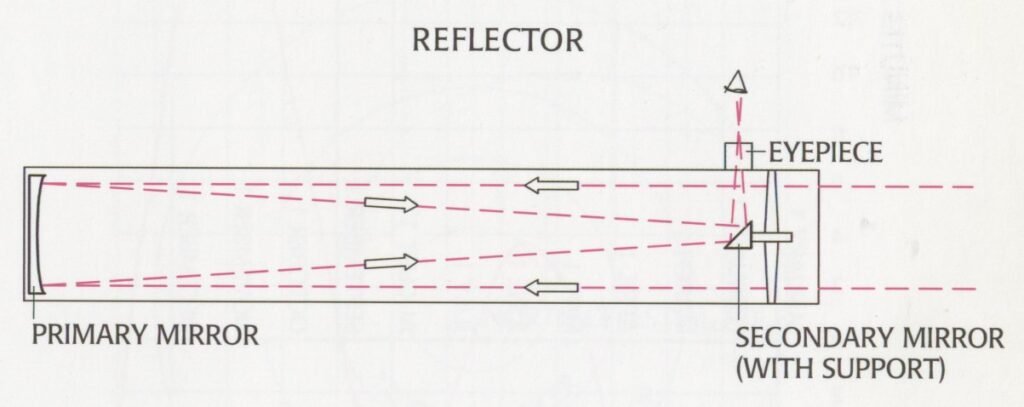Difference between refractor and reflector telescope: The main difference between refractor telescopes and reflector telescopes lies in their optical design. Refractors use lenses to gather and focus light, making them ideal for observing deep space objects like galaxies and nebulae. Reflectors, on the other hand, employ mirrors to collect and reflect light, making them better suited for observing larger and brighter objects like the Moon and planets.
Introduction to Telescopes
Telescopes are essential tools for astronomers and stargazers, allowing us to explore the cosmos from our backyards. Among the various types of telescopes available, refractor and reflector telescopes are the most popular. Understanding the differences between these two types can help you choose the best telescope for your needs.
Difference between refractor and reflector telescope: Basic Principles
| Aspect | Refractor Telescope | Reflector Telescope |
|---|---|---|
| Optical Design | Uses lenses to gather and focus light. Ideal for deep space objects like galaxies and nebulae. | Employs mirrors to collect and reflect light. Better for observing larger, brighter objects (e.g., Moon, planets). |
| Maintenance | Requires less maintenance due to sealed optics. | May need occasional mirror alignment and cleaning. |
| Portability | Typically shorter and smaller, easier to carry. | Longer tubes, bulkier design. |
| Field of View | Broader field of view. | Narrower field of view. |
Refractor Telescopes

Refractor telescopes use lenses to gather and focus light. They are the oldest type of telescope, first invented by Hans Lippershey in the early 17th century and famously improved by Galileo. The primary lens, known as the objective lens, bends (refracts) light to form an image at the focal point.
Reflector Telescopes

Reflector telescopes use mirrors instead of lenses to collect and focus light. Sir Isaac Newton designed the first successful reflector telescope in 1668, known as the Newtonian reflector. The primary mirror captures light and reflects it to a focal point, often using a secondary mirror to redirect the light to an eyepiece.
Construction and Design
Refractor Telescope Design
A typical refractor telescope consists of:
- Objective Lens: A large, convex lens at the front of the telescope that gathers light.
- Tube: A long, sealed tube that holds the lenses in place and keeps out dust and moisture.
- Eyepiece: A smaller lens at the back of the telescope through which the viewer looks.
Reflector Telescope Design
A typical reflector telescope consists of:
- Primary Mirror: A concave mirror at the base of the telescope that gathers light.
- Secondary Mirror: A smaller mirror that reflects the light to the eyepiece.
- Tube: An open or closed tube that holds the mirrors in place.
- Eyepiece: Located on the side or top of the telescope, depending on the design.
Advantages and Disadvantages
Refractor Telescopes
Advantages:
- Sharp, High-Contrast Images: Refractors produce high-quality images with excellent contrast, making them ideal for viewing planets and the moon.
- Durability and Low Maintenance: The sealed tube protects the optics from dust and moisture, requiring less maintenance.
- Easy to Use: Simple design with minimal adjustments needed for operation.
Disadvantages:
- Chromatic Aberration: Lenses can cause color fringing around bright objects due to different wavelengths of light focusing at different points.
- Cost: High-quality refractors are expensive, especially as the aperture size increases.
- Weight and Length: Large refractors can be heavy and cumbersome, making them less portable.
Reflector Telescopes
Advantages:
- No Chromatic Aberration: Mirrors reflect all wavelengths of light equally, eliminating color fringing.
- Cost-Effective: Larger apertures are available at a lower cost compared to refractors, providing better light-gathering ability.
- Compact Design: Reflectors with larger apertures are generally more compact and portable than equivalent refractors.
Disadvantages:
- Alignment (Collimation): Reflectors require regular alignment of the mirrors for optimal performance.
- Open Tube Design: Open tubes are susceptible to dust and require more maintenance.
- Less Durable: Mirrors can be more fragile and may require more careful handling.
Performance Comparison
Image Quality
Refractor telescopes are known for their crisp and high-contrast images, which is particularly beneficial for observing planets, the moon, and double stars. Reflectors, on the other hand, provide excellent deep-sky views, capturing faint galaxies and nebulae due to their larger apertures.
Light Gathering
Reflector telescopes generally have larger apertures compared to refractors at the same price point, allowing them to gather more light. This makes reflectors better suited for observing faint deep-sky objects.
Portability
Refractors, especially those with smaller apertures, are more portable and easier to set up. Reflectors with larger apertures offer better light-gathering ability but are often bulkier and heavier.
Choosing the Right Telescope for Your Needs
For Planetary and Lunar Observation
If your primary interest is observing the planets and the moon, a high-quality refractor telescope with a smaller aperture (4-6 inches) is an excellent choice. The sharp, high-contrast images provided by refractors make them ideal for detailed views of these objects.
For Deep-Sky Observation

For those interested in deep-sky objects like galaxies, nebulae, and star clusters, a reflector telescope with a larger aperture (6-10 inches or more) is preferable. The greater light-gathering ability of reflectors allows them to capture faint objects that refractors may miss.
For Portability and Ease of Use
If you need a portable and easy-to-use telescope, a small to medium-sized refractor is ideal. Refractors are durable and require minimal maintenance, making them suitable for quick setup and transport.
For Budget-Friendly Options
If you are looking for a cost-effective telescope with a large aperture, a reflector is the way to go. Reflectors offer more bang for your buck in terms of aperture size and light-gathering ability, making them ideal for budget-conscious astronomers.
Understanding the differences between refractor and reflector telescopes is crucial for making an informed decision. Refractors provide high-quality, sharp images with minimal maintenance, making them ideal for lunar and planetary observations. Reflectors, with their larger apertures and cost-effective design, are excellent for deep-sky observations and those on a budget.
By considering factors such as image quality, light gathering, portability, and budget, you can choose the best telescope to suit your astronomical needs and preferences.

